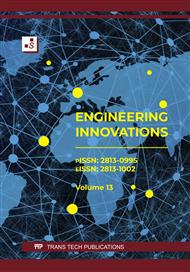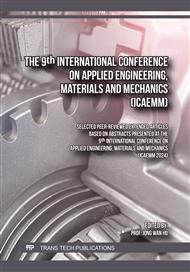p.13
p.25
p.37
p.43
p.49
p.57
p.75
p.83
p.99
Laboratory Evaluation of Load-Bearing Behavior and Drainage Ability of Pervious Concrete Pavement
Abstract:
This study presents an experimental investigation of the load-bearing behavior and drainage ability of pervious concrete (PC) produced using local materials in Vietnam with differently designed porosities of 15% (R15), 20% (R20), and 25% (R25). The PC samples were cast at the laboratory and cured in open air before being tested for drainage ability, flexural and compressive strengths, and dry density. The relationship between load and displacement of the PC was also analyzed in this study. Results showed that the designed porosity significantly affected the mechanical strength, density, and infiltration rate of the PC. In detail, the compressive strength of PC ranged from 1 to 5 MPa while the flexural strength values were 0.86, 0.99, and 1.71 MPa for samples designed at the respective porosities of 25%, 20%, and 15%. In addition, the dry density of PC specimens (1560-1688 kg/m3) decreased with an increase in the designed porosity. The infiltration rate values were measured at 19.4, 38.3, and 1215 cm/min corresponding to the R15, R20, and R25 specimens. Besides, the load-displacement curves under flexure and compression revealed a significant impact of void contents on the strength-bearing capacity of PC as the R15 specimen exhibited the highest slope, indicating the higher brittle behavior and lower deformation. Overall, the experimental results further demonstrated the high applicability of the PC for various construction applications in real practice.
Info:
Periodical:
Pages:
49-54
Citation:
Online since:
February 2025
Permissions:
Share:
Citation:



